

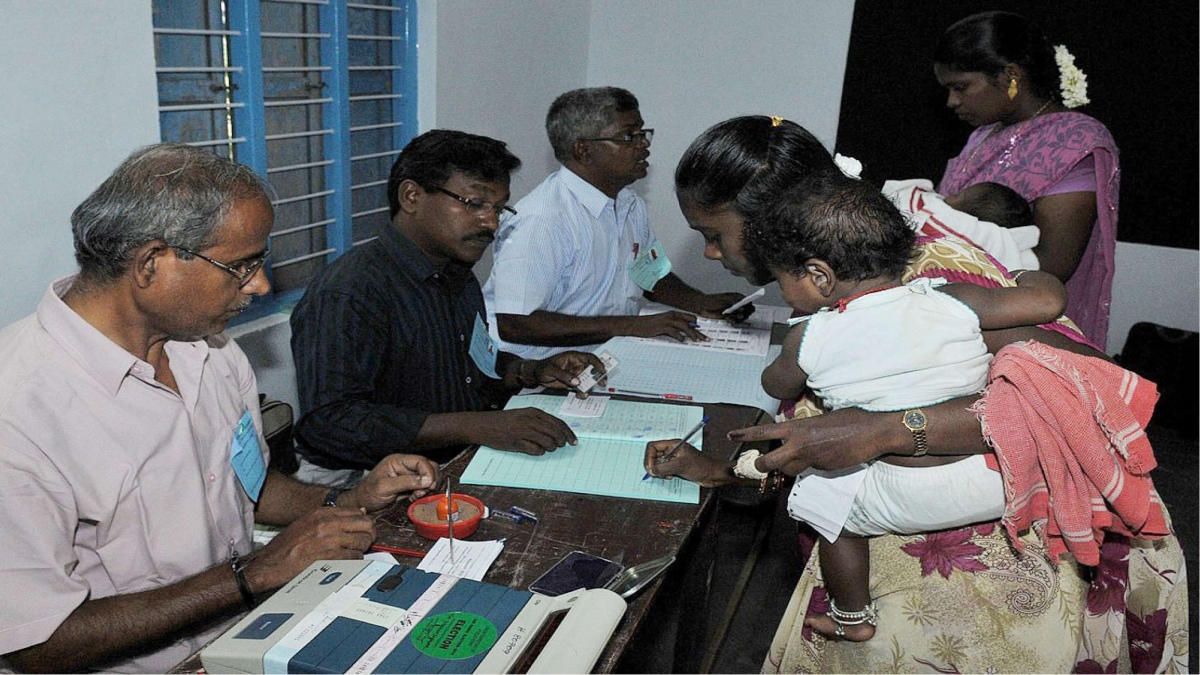
On 24 February, as per an official announcement by the President of India, Ram Nath Kovind, President’s Rule was imposed in the Union Territory of Puducherry after 30 years. Just a few days before this, on 22 February, the Chief Minister of the UT, V. Narayanasamy resigned ahead of a trust vote which was scheduled to take place, after his government had lost the majority mark in the Assembly.
Let us trace back to 25 January, when the first INC MLA tendered his registration, and initiated the downfall of the Congress-led government in the UT. The first resignation which rocked the INC led government in the state was that of former PWD Minister A. Namassivayam who is considered to be the second-in-command to the Chief Minister on January 25. He joined the BJP just days after. Shortly after, another MLA, E Theepaindan also resigned and joined the BJP.
Following this, on 15 February, the Health Minister Malladi Krishna Rao also resigned, which brought down the strength of the INC in the Legislative Assembly to merely 11 seats. This is because the INC had already disqualified an MLA, N. Dhanavelou for anti-party activities in July 2020. Just a day after, MLA A. John Kumar also announced his resignation just hours before the visit of the party leader Rahul Gandhi. Amid the ongoing political crisis, on the same day (16 February), President of India, Ram Nath Kovind also announced the removal of Puducherry lieutenant governor Kiran Bedi from her post.
As a result of this, opposition parties, led by the leader of the opposition in the UT submitted a petition seeking a floor test. They argued that the ruling coalition had slipped below the majority mark required in the assembly (17), and both sides now had equal strength (14 each). Telangana governor Tamilisai Soundararajan who holds the additional charge of the UT, ordered a floor test—a floor test is a motion initiated by the government seeking to know if it enjoys the confidence of the legislature, by 22 February.
On 21 February, just a day before the floor test was scheduled to take place, two more MLAs, including K Lakshminarayanan from the INC and Dravida Munnetra Kazhagam’s (DMK) Venkatesan resigned from their posts. At the time of the floor test, the ruling Congress and DMK alliance had 12 members left in the assembly, while on the opposition side, the AINRC had 7 MLAs, the AIADMK had 4, while the BJP had 3 MLAs (all nominated). With a defeat seeming inevitable, Puducherry Chief Minister V. Narayanasamy and his cabinet resigned ahead of a trust vote on 22 February,following which President’s Rule has been imposed in the UT, till the Assembly Elections are held on 6 April and subsequent results are announced on 2 May. In a matter of less than 30 days, the Congress lost control of the only government it had in South India.
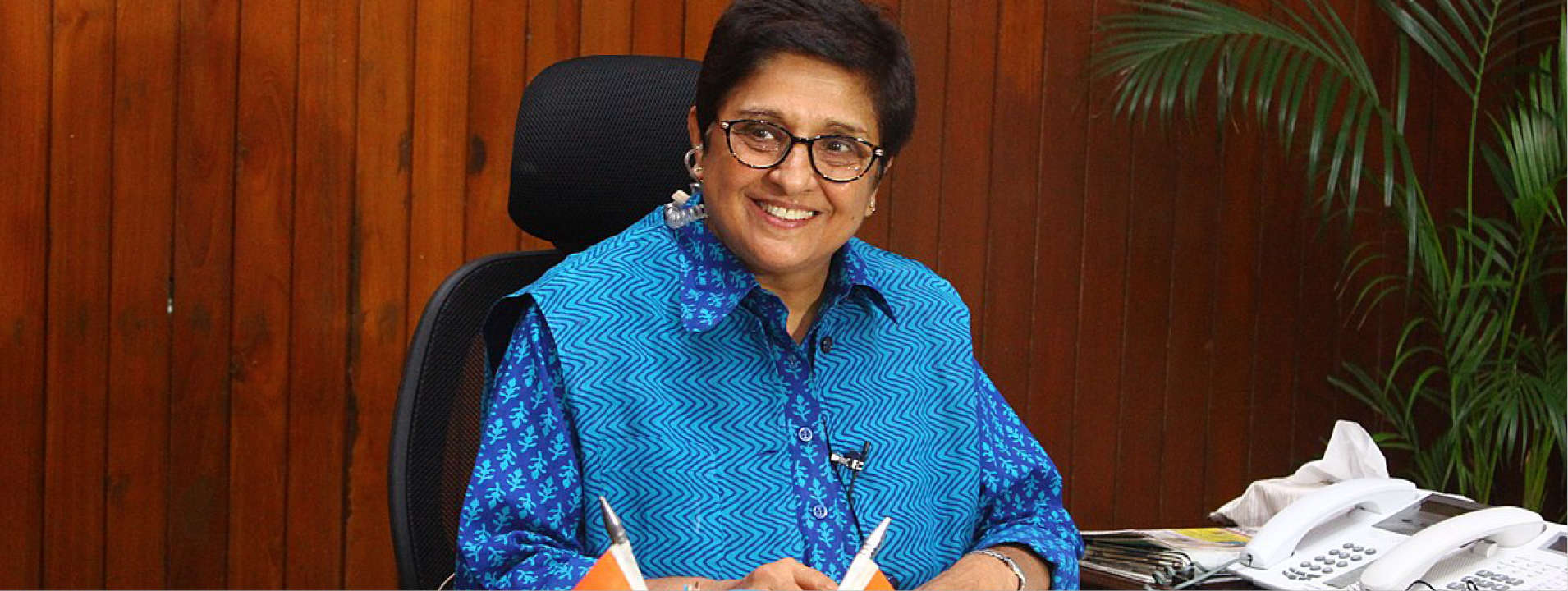
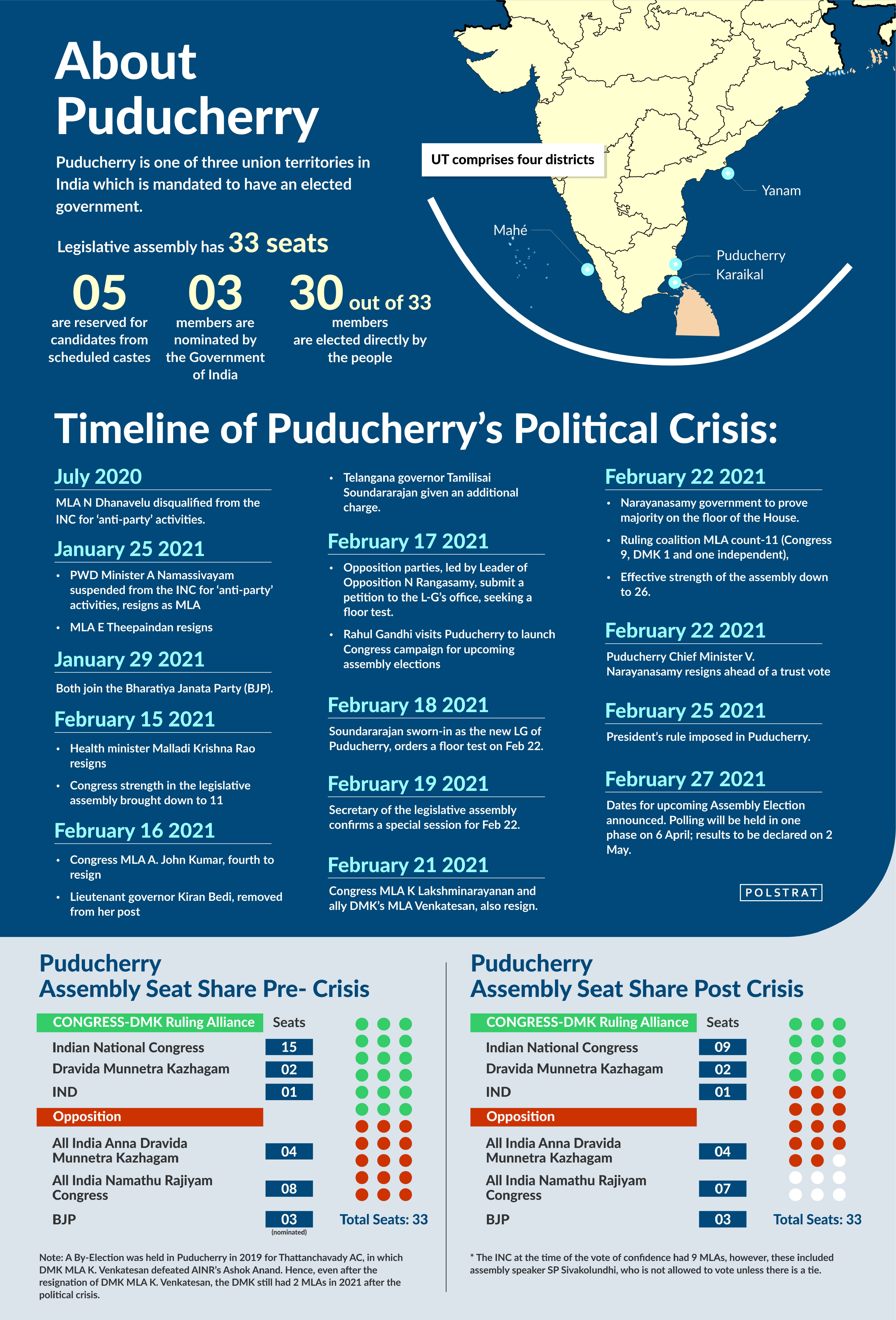
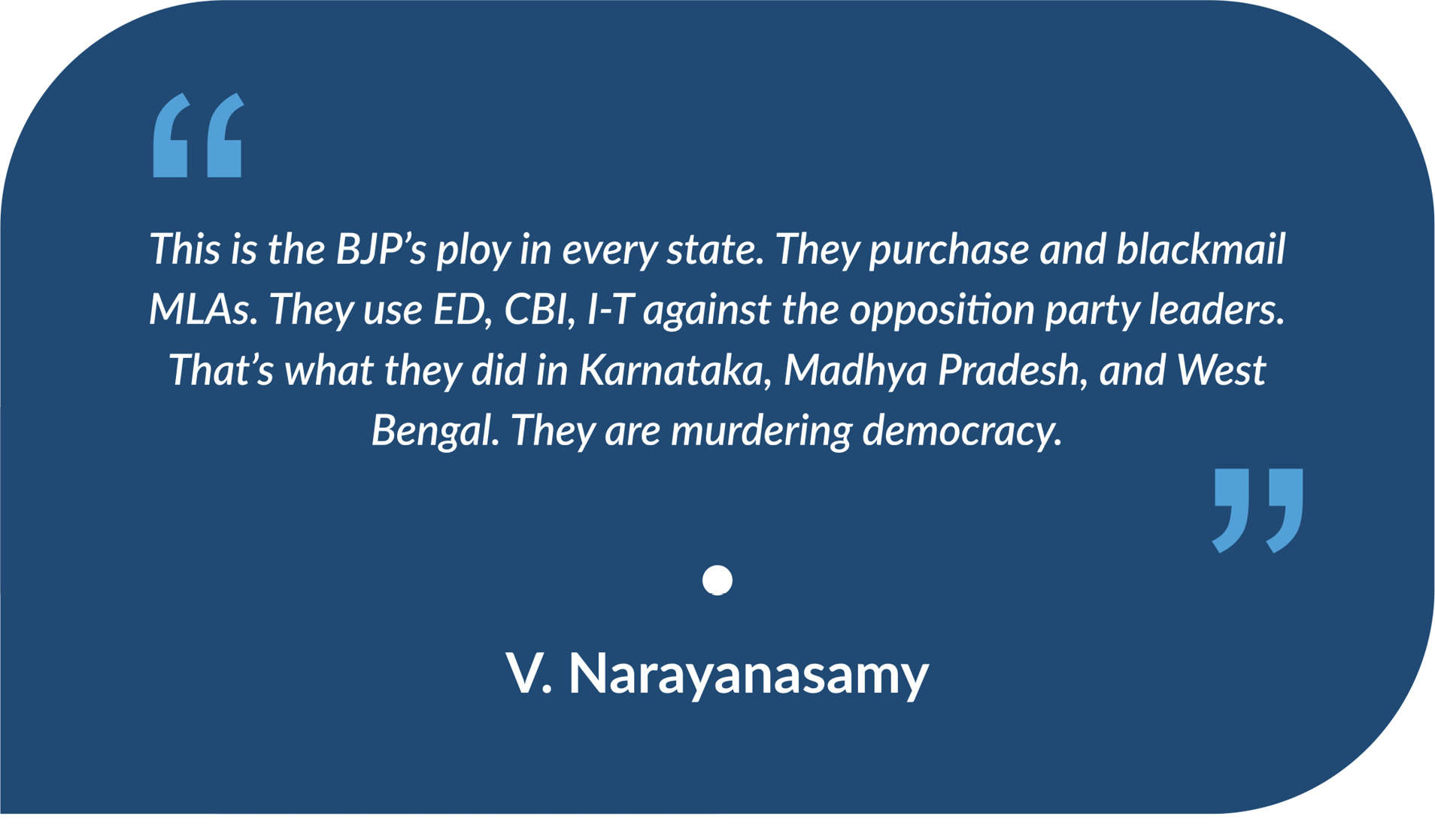
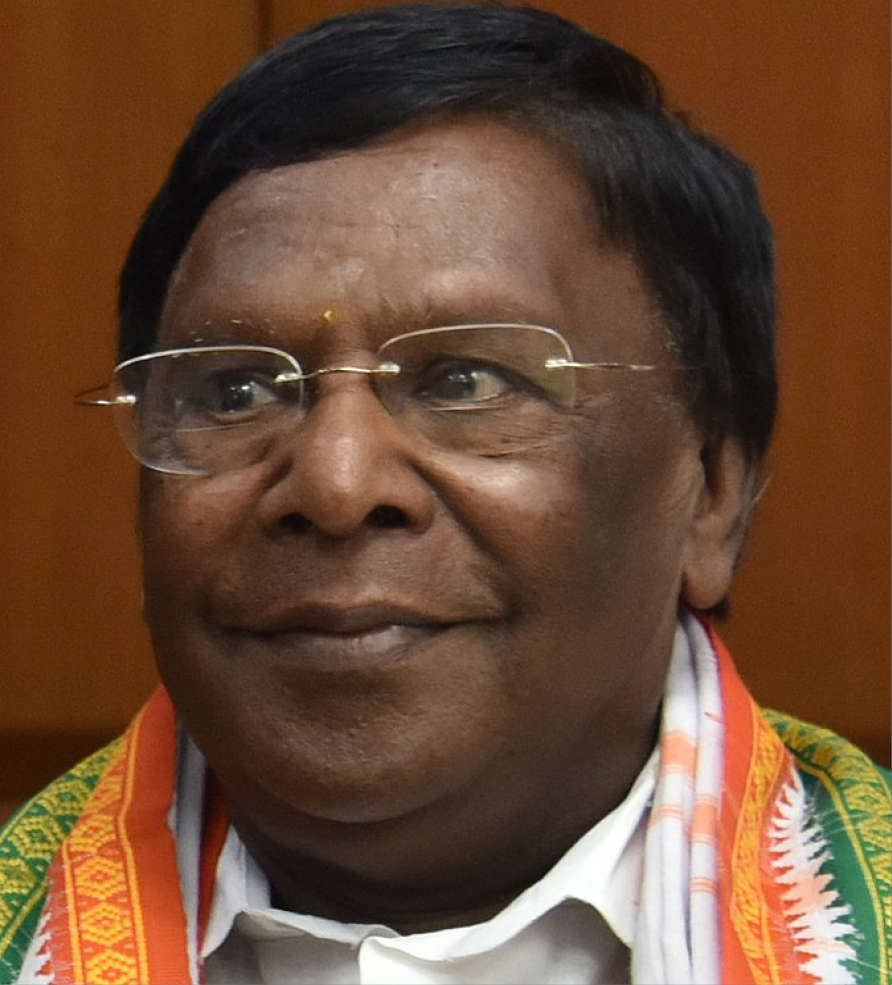

Photograph by Press Information Bureau, India